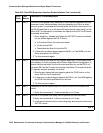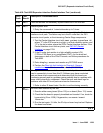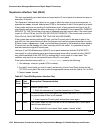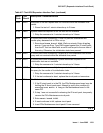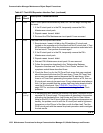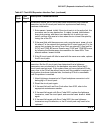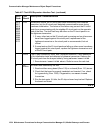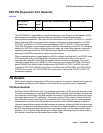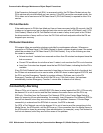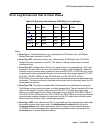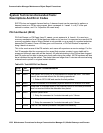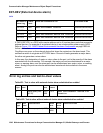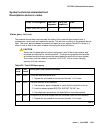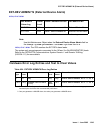
Communication Manager Maintenance-Object Repair Procedures
1236 Maintenance Procedures for Avaya Communication Manager 3.0, Media Gateways and Servers
If the Expansion Archangel Link (EAL) is recovered quickly, the PN Warm Restart returns the
PN to service with minimal effects on user service. If the EAL cannot be recovered quickly, the
PN is taken out of service and a PN Reset Level 2 (PN Cold Restart) is required to return it to
service.
PN Cold Restarts
If the media server-to-PN link has failed and has not been recovered within 30 seconds, the PN
is taken out of service and can be brought back into service only with a PN Reset Level 2 (PN
Cold Restart). Effects of a PN Cold Restart include a reset of every circuit pack in the PN and
the disconnection of every call to or from the PN. Calls with both endpoints within the PN are
dropped upon recovery.
PN Restart Escalation
PN restarts follow an escalation strategy controlled by maintenance software. Whenever a
request for a PN Reset Level 1 (PN Warm Restart) is made, software checks to see if the restart
should be escalated to a PN Reset Level 2 (PN Cold Restart). If any of the following are true,
the restart is escalated:
● At least two level 1 restarts have occurred and less than 30 minutes has elapsed since the
last occurrence.
● Current PN conditions do not allow a level 1 restart, such as when the PN is out of service.
● Less than 3 minutes has elapsed since the last PN Cold Restart, indicating that the PN is
unstable.
If two PN Cold Restarts have been executed in less than an hour and the link is functional, but
the PN has not recovered to an in-service state, a MAJOR alarm is raised against EXP-PN, and
the PN is put into Emergency Transfer by system software. (Software can invoke PN
Emergency Transfer only when the link to the PN is up. If the link is down, the hardware
automatically invokes Emergency Transfer 1 minute after it detects a link failure).
Connectivity Alarming
When a PN is out of service, a MAJOR EXP-PN alarm is raised against that PN. A PN can only
be alarmed if it is out of service and the fiber between the media server and the PN is up.
G3R only: If the fiber from the Processor Port Network (PPN) to the Center Stage Switch is
down (by removing it from administration, for example), every Expansion Port Network (EPN) is
lost but not alarmed, since they are not the cause of the problem. However, if Center Stage
connectivity is restored and the EPN fails to recover, the EPN is alarmed.
For ATM, a Port Network can only be alarmed if it is out of service and the connections to the
Media Server, the ATM switch, and the EPN are up. If the connection from the Media Server to
the ATM switch is down (by removing it from administration, for example), every Port Network is
lost but not alarmed, since they are not the cause of the problem.



